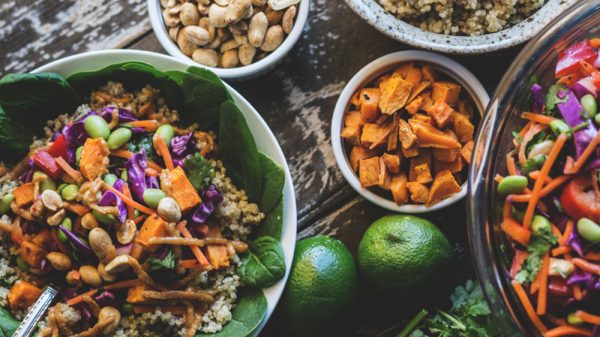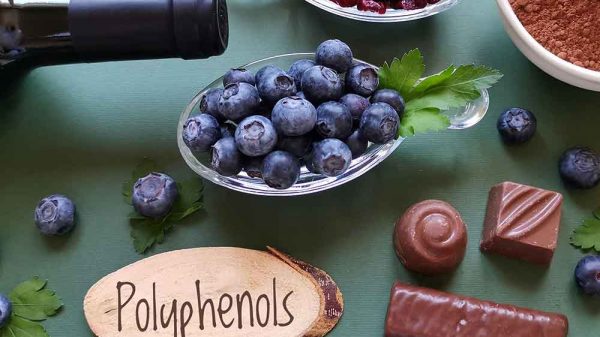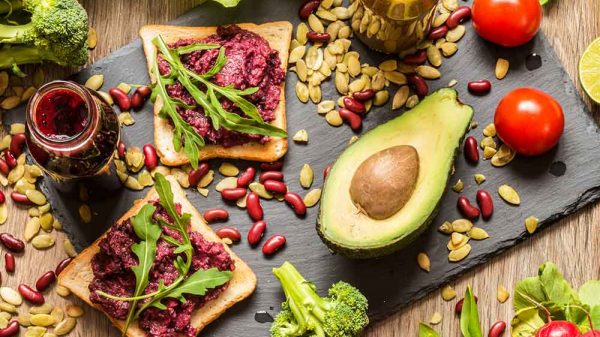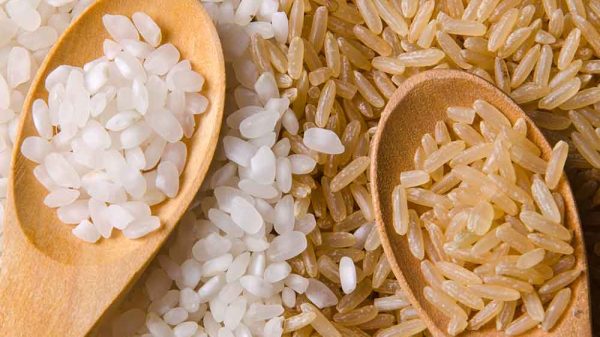Are there fruits with protein? We often think of fruit as nature’s candy: colorful, sweet, and juicy. Fruit may be a far cry from what we traditionally think of as protein-packed foods, like beef, chicken, eggs, and bacon. However, fruit contains infinitely more anticancer, antioxidant, and health-promoting properties than any of these conventional high-protein animal products. And as an added bonus, many fruits actually contain some protein.
Check out these 15 fruits high in protein as well as their health-promoting vitamins and other micronutrients.
Guava
Guava fruit grows in tropical climates and is commonly found in Central America, South America, and India. Guavas are small fruits that have a yellow or green rind, with a pulp that ranges in color from white to deep pink. Guava has long been used in traditional medicine, research studies have been conducted that support the therapeutic effects of guava fruit. (1)
Interestingly, even the leaves of guava fruit have medicinal properties. One study conducted on rats with liver damage revealed that ingesting guava leaf extract helped lower liver enzymes. (2)
Perhaps, guava could have implications for people with liver damage and be part of a healthy diet for reversing liver cirrhosis.
Eating guava fruit has shown promise in mitigating noncommunicable diseases. Research has revealed that consumption of guava fruit may help lower blood sugar, improve diabetes, and decrease overall cholesterol while also increasing the good kind of cholesterol. Other studies have shown that guava and its leaves could fight against bacterial infections in the respiratory and gastrointestinal systems. (1)
Strawberry guava is a variety of the common guava that is characterized by a red rind and contains even more protein.
In 1 cup of guava, there are 4.21 grams of protein. In 1 cup of strawberry guava, there are 6.22 grams of protein. (3)
Coconut
Coconut milk and coconut oil are all the rage these days, known for their creamy consistency and healthy medium-chain triglycerides (MCT). Eating coconut meat straight from the source is sometimes overlooked. Of course, the difficulty of hacking through a coconut’s tough exterior can be a deterrence to reaching the pulp inside.
Coconut has gained popularity as a cure-all for a variety of ailments, and science backs up the therapeutic effects of coconut. The antioxidant properties in coconut fight against high blood pressure and heart disease. Some research shows that coconut may be soothing to the central nervous system and prevent seizures. Much like dates, coconut is also protective against bacterial and viral infections. (6)
A cup of fresh shredded coconut pulp contains 2.66 grams of protein. (3)
Jackfruit
Jackfruit -grown on jack trees – thrives in the hot, humid climates of Southeast Asia, South America, and Southern India. Jackfruit is enormous and is considered to be the largest fruit in the world. Its adaptable and mild flavor allows jackfruit to be incorporated into a variety of dishes. The texture of jackfruit is often compared to pulled pork, making it a fantastic meat substitute. Depending on how it’s cooked, jackfruit can also have a meat-like appearance. Though jackfruit contains a lot of protein as far as fruit goes, it’s not a great replacement for meat in terms of amino acid content.
Jackfruit varies in texture and nutritional content depending on the stage of ripeness. Unripe jackfruit is firmer in texture, contains more protein, and holds its own in meat-based recipes like barbecue pulled pork, crab cakes, and sloppy joes. Ripe jackfruit is sweeter, softer, with a lower protein content.
A recent review published in the International Journal of Food Science discusses the numerous beneficial impacts of jackfruit on human health. Jackfruit facilitates immune system function and dampens inflammation by preventing excessive release of white blood cells. Like many other fruits on this list, jackfruit promotes cardiovascular health by promoting a healthy ratio of bad and good cholesterol, which in turn inhibits atherosclerosis. (7)
A cup of sliced jackfruit contains about 3 grams of protein. (3)
Blackberries
Blackberries are juicy, black-colored berries, as their name describes. These berries grow best in temperate climates like those in North America and Europe. Blackberries are often used in pies and jams, though they are delicious when eaten fresh as well. Blackberries are juicy in texture and contain many small seeds.
Research published in the International Journal of Molecular Sciences describes the health benefits of blackberries. Blackberries contain numerous antioxidants, including anthocyanins, flavonols, and ellagic acid. Research reveals that these compounds effectively collect and clear free radicals that occur as waste products in biological processes, which in turn preserves cellular function by protecting them from damage. (8)
A 1-cup serving of blackberries contains about 2 grams of protein. (3)
Raspberries
The raspberry is a vibrant red fruit that looks like a small red hat and is native to temperate regions in Europe and North America. Raspberries are popularly used in pies, cakes, and jams, but are a tasty treat when consumed fresh. These berries also contain vital vitamins and nutrients like vitamin C, vitamin K, potassium, and phosphorus.
Similar to blackberries, raspberries contain bioactive and anti-inflammatory agents, like anthocyanin and ellagitannin. Research shows that these compounds quell oxidative stress and promote cardiovascular health. (9)
A cup of raspberries provides about 1.5 grams of protein. (3)
Grapes
Grapes grow on vines in temperate, mountainous regions and vary widely in size and shape. While some are deep maroon or black in color, others are light purple or green. They are often used to make wines, juices, and jams and are also consumed fresh. Grapes are rich sources of vitamin C, vitamin K, and thiamine.
Grape skins, particularly those that are purple or red, contain polyphenols with antioxidant properties. One such polyphenol is resveratrol, which protects your body from inflammation and reduces the risk for cardiovascular disease and metabolic syndrome. Resveratrol even has the ability to inhibit tumor growth, decrease cancer metastasis, and induce cell death in cancer cells. (10)
A 1-cup serving of grapes provides about 1 gram of protein. (3)
Dates
Though not terribly high in protein, this sticky, decadent fruit is an excellent, healthy alternative to refined sugar. Dates work as a sweetener for smoothies, cookies, cakes, and other baked goods. As a healthy snack, try pairing dates with walnuts for an extra boost of protein and polyunsaturated fat. In a serving of 5-6 dates, there is 1 gram of protein. (3)
As a sweetener, dates beat refined sugar by a long shot. For comparison, refined sugar contains no protein and essentially no nutritional value.
Dates, on the other hand, are highly nutrient-dense, with B complex vitamins, vitamin C, carotenoids, and minerals such as copper, phosphorus, zinc, and manganese. Dates also exert potent antioxidant, anticancer, and antimicrobial properties. (4) Interestingly, dates have a curative effect on damaged livers in rat models. (5)
Pomegranate
Pomegranates are native to the Mediterranean and Middle Eastern regions. These fruits are spherical in shape with a dark red hue. When the outer shell is removed, the insides are filled with the edible fruit; tiny bead-like seeds that resemble corn kernels and are juicy when eaten.
Pomegranate is a great source of vitamin C, fiber, folate, and vitamin K. Research reveals the potent medicinal impact of pomegranate on human health. Pomegranate exerts a protective effect on DNA and may help prevent damage as a result of cancer or oxidative stress. Shockingly, pomegranate juice has an antioxidant capacity that is 300% greater than that of green tea and red wine! (11)
Plus, a 1-cup serving of pomegranate contains nearly 3 grams of protein. (3)
Pumpkin
We often associate pumpkins with Halloween jack-o-lanterns and other holiday festivities. Pumpkin is a nutrient-rich fruit with loads of beta carotene – or vitamin A- which is given away by its vibrant orange color.
A recent review published in Molecules discusses the numerous medicinal properties of pumpkin. Pumpkin shows promise in lowering blood sugar levels in diabetic patients and improving metabolic syndrome. Cucurbitacins, a specific compound found in pumpkin, blocks certain molecular pathways that are responsible for encouraging cancer and tumor growth. (12)
Even pumpkin that’s been canned retains vital nutrients and anti-inflammatory agents. So, you can feel a little less guilty about that extra slice of pumpkin pie at Thanksgiving. Just a half-cup serving of canned pumpkin contains 2 grams of protein! (3)
Banana
The banana is a tropical fruit that when ripe, has a sweet taste and characteristically yellow peel. Bananas are known to be a great source of potassium, which helps keep your blood pressure at a healthy level. In addition, bananas provide vitamin C, which is essential for a healthy immune response and healing. Bananas are also rich in vitamin B6 (pyridoxine), which functions as an enzyme cofactor in metabolic processes and helps your cells harness energy from food.
When we think of bananas, the sweet yellow fruit that is perfect in smoothies or as a cereal topper comes to mind. However, unripe green bananas have health benefits as well. A wealth of research shows that resistant starch in green bananas has a therapeutic effect on the digestive system. (13)
A 1-cup serving of sliced bananas – roughly equivalent to one extra-large banana – contains about 1.7 grams of protein. (3)
Avocado
Avocado, native to Central America, is grown most abundantly in Mexico. Avocado has become increasingly popular and is commonly used in guacamole, avocado toast, and salads. Its mild taste makes it an excellent substitute for fat in dessert recipes, such as chocolate mousse.
Bananas usually receive all of the attention for being the potassium-packed fruit, when in fact avocados provide 60% more potassium than an equivalent portion of banana. (14)
A 1-cup serving of sliced avocado contains nearly 3 grams of protein. (3)
Açaí
The açaí palm is a tree native to South America and is abundant in Brazil, Colombia, Ecuador, and Venezuela. These trees bear açaí fruit, which is a deep purple fruit that looks similar to berries. Though fresh açaí fruit can be difficult to find in American grocery stores, you can commonly buy packets of pureed açaí in the frozen section at the grocery store. Research reveals that açaí fruit demonstrates anti-cancer properties, and is chock full of antioxidants. (15)
You can feel good about eating as many açaí bowls as you like! There are 2 grams of protein in one 100-gram serving of açaí. (3)
Kiwi
Originating in China, kiwis grow on vines throughout temperate and mountainous regions. Kiwis have green or yellow flesh, with black seeds, and a fuzzy thin skin. In addition to being refreshing and sweet in flavor, kiwi is packed with immune-building vitamins and nutrients like vitamin C, vitamin E, and antioxidants. Consuming kiwi has beneficial implications for gut health, because of its high fiber content and the presence of the unique enzyme actinidin. (16)
Actinidin influences pH, or level of acidity in your digestive system, and research shows that it may enhance the breakdown of macronutrients. In a study conducted at Massey University in New Zealand, researchers found that kiwi fruit extract facilitates and improves the digestion of whey protein and wheat protein. (17)
This may mean that eating kiwi can increase the bioavailability of the proteins you eat.
In addition, kiwifruit contains protein in itself, with a 1-cup serving of sliced kiwi providing about 2 grams of protein. (3)
Cherries
Cherries- grown on trees and presumed to originate from the Mediterranean region – are small fruits that are used in pies and jams. These fruits vary in color and taste, from sour and bright red to dark and sweet. Some cherries are even pink or yellow in color.
Cherries contain vitamin C, manganese, and potassium. Numerous research studies have proven the physiological benefits of cherries. Cherries contain serotonin, melatonin, polyphenols, and the amino acid tryptophan. These anti-inflammatory compounds have been shown to decrease oxidative stress, mitigate metabolic syndrome and cardiovascular disease, improve mood, reverse nonalcoholic fatty liver disease, and even help treat muscle pain and healing. (18)
A 1-cup serving of cherries contains about 1 gram of protein. (3)
Apricots
Apricots are small fruits that contain pits and are orange in color with a soft fuzzy skin that can be compared to that of a peach. As its orange color indicates, apricots are an excellent source of beta carotene. Apricots also contain vitamin C, magnesium, iron, and vitamin B6.
Moreover, apricots have therapeutic effects on inflammatory digestive disorders. A study published in Research in Pharmaceutical Sciences revealed that apricot may play a role in mitigating colitis and treating ulcers in rat models. (19)
A cup of sliced apricots contains 2.3 grams of protein. (3)
Nectarines
Nectarines are in the same family as peaches and have similar characteristics, except their outer skin is smooth in contrast to the fuzzier skin on peaches. Nectarines may have yellowish-red skin with a yellow interior or a whitish-pink skin with a white interior. The juicy flesh of nectarines is particularly refreshing in the summer as part of a fruit salad or on their own. Nectarines contain vitamin C, vitamin A, and fiber, and also contains the antioxidant chlorogenic acid. (20)
A cup of sliced nectarines contains 1.5 grams of protein. (3)
Quality of Protein in Fruit
A plant-based diet is scientifically proven to be healthier than diets high in animal products. However, in terms of protein quality, animal products contain a complete amino acid profile in just a single source. A single meat product or dairy product contains all essential amino acids needed for healthy physiological functioning. In contrast, soy protein is the only plant-based product with an optimal ratio of essential amino acids.
So, swapping fruit protein for meat or dairy protein is not an equal trade.
Those who consume dairy and meat protein on a regular basis probably won’t need to worry as much about protein calorie malnutrition or amino acid deficiency. On the other hand, when following a plant-based diet, it is critical to consume varied sources of plant proteins to ensure you get a sufficient amount of protein as well as optimal amounts of amino acids.
Fruit (With and Without Protein) is Still Good for You
Other fruits, like mango, persimmon, pineapple, and watermelon, have less protein, but this doesn’t mean that you should avoid them! They’re packed with other nutrients and antioxidants. Eating an abundance of fresh fruits, regardless of protein content, is an important part of a healthy diet and lifestyle that supports immune health, promotes weight loss, reverses metabolic syndrome, and prevents disease.
To pack more protein into snacks, try pairing fruit with protein sources such as low-fat Greek yogurt, cottage cheese, walnuts, almonds, or peanut butter.
The Bottom Line
There are lots of high protein fruits (as far as fruit standards go). If you want to incorporate more protein into your diet overall, a piece of fruit won’t efficiently provide the extra protein you’re looking for. However, consuming fruits and veggies is vital to promoting overall health and lowering your risk of disease.
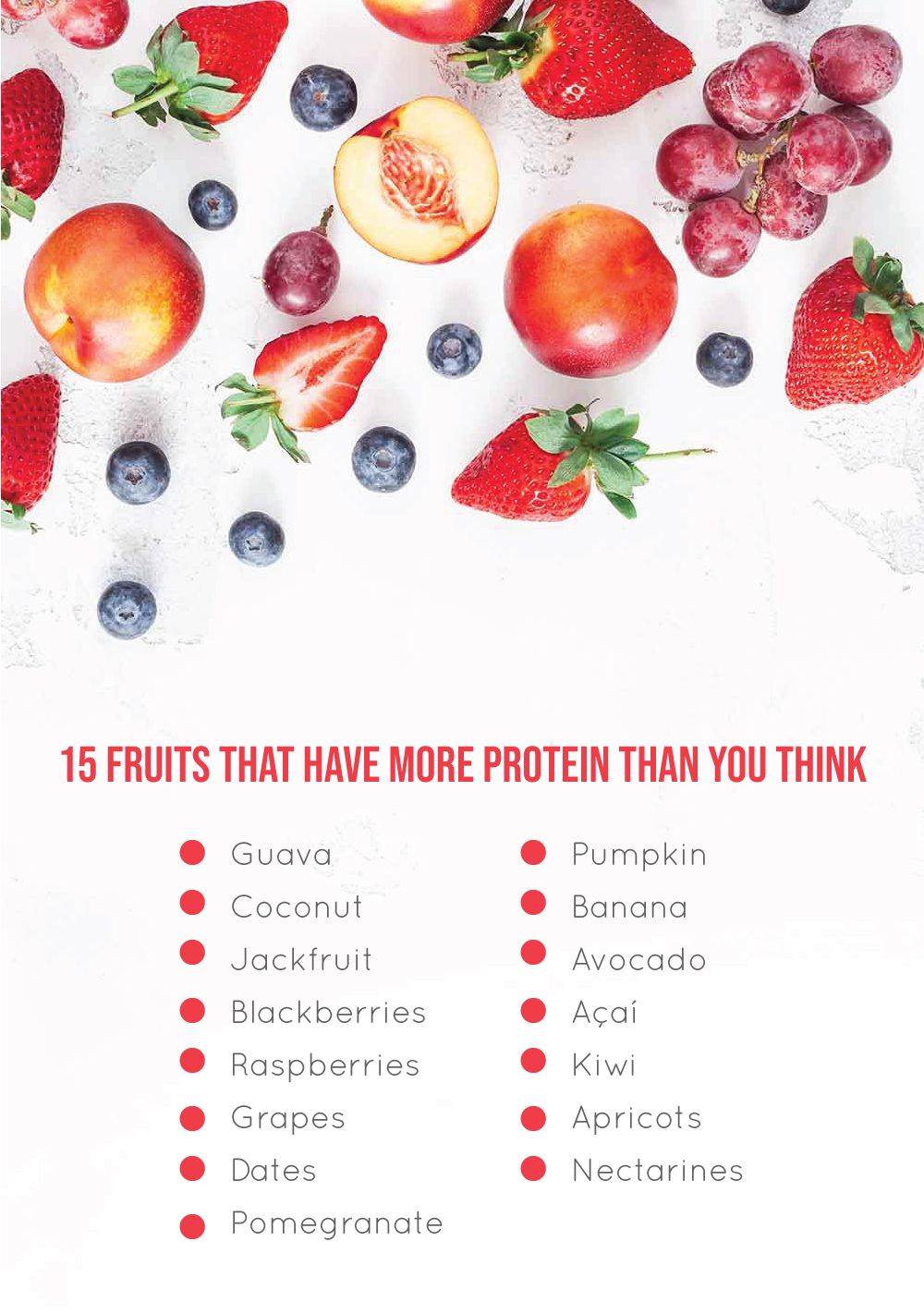
References:
(1) https://www.ncbi.nlm.nih.gov/pmc/articles/PMC5628524/
(2) https://www.ncbi.nlm.nih.gov/pubmed/16629373/
(4) https://www.ncbi.nlm.nih.gov/pmc/articles/PMC5440559/
(5) https://www.ncbi.nlm.nih.gov/pubmed/20359872/
(6) https://www.ncbi.nlm.nih.gov/pmc/articles/PMC4671521/
(7) https://www.ncbi.nlm.nih.gov/pmc/articles/PMC6339770/
(8) https://www.ncbi.nlm.nih.gov/pmc/articles/PMC4519857/
(9) https://www.ncbi.nlm.nih.gov/pmc/articles/PMC4717884/
(10) https://www.ncbi.nlm.nih.gov/pubmed/29052449
(11) https://www.ncbi.nlm.nih.gov/pmc/articles/PMC4477247/
(12) https://www.ncbi.nlm.nih.gov/pmc/articles/PMC6572650/
(13) https://www.ncbi.nlm.nih.gov/pmc/articles/PMC6627159/
(14) https://www.ncbi.nlm.nih.gov/pmc/articles/PMC6826385/
(15) https://www.ncbi.nlm.nih.gov/pmc/articles/PMC6028114/
(16) https://www.ncbi.nlm.nih.gov/pmc/articles/PMC6267416/
(17) https://www.ncbi.nlm.nih.gov/pubmed/20232891/
(18) https://www.ncbi.nlm.nih.gov/pmc/articles/PMC5872786/
